In an authentic example of synodality, the American bishops, gathered at the Council of Baltimore in May 1846, asked that Our Lady be declared the patroness of the United States of America under her title of the Immaculate Conception.
Their petition would bind our republic with an old theological controversy that had divided some of Catholicism’s greatest minds.
St. Bernard of Clairvaux was unsure about the dogma, so was St. Thomas Aquinas. The Dominican Order — including the popes elected from among its friars — didn’t share the enthusiasm that Franciscans, Jesuits, and the Spanish Empire had for the belief in the Immaculate Conception, which had long enjoyed popular devotion despite its unofficial status.
For centuries, elegant works of art celebrated Mary’s privilege, while eloquent sermons praised and defended it. Popes had forbidden debate on the question of Mary’s conception for centuries until Blessed Pope Pius IX, after an extraordinary effort of consultation (or synodality, again?) pronounced it an infallible dogma in a solemn and dramatic ceremony on Dec. 8, 1854.
In his papal bull, “Ineffabilis Deus” (“God Ineffable”), Pius explained that his own personal fasting, as well as both private and public prayer by the whole Church, had led to him to declare: “The doctrine which holds that the most Blessed Virgin Mary, in the first instance of her conception, by a singular grace and privilege granted by Almighty God, in view of the merits of Jesus Christ, the Savior of the human race, was preserved free from all stain of original sin, is a doctrine revealed by God and therefore to be believed firmly and constantly by all the faithful.”
The dogma of Mary’s Immaculate Conception appeared against a dramatic backdrop.
Almost immediately upon becoming pope, Pius had been confronted with the political turbulence sweeping Europe, then the interruption of the First Vatican Council, and even being taken prisoner in the Vatican.
The Church herself was undergoing a series of controversies involving the legitimacy of new popular devotions like the Miraculous Medal and political upheaval in the papal court.
And yet, as deserving as it is of our celebration and gratitude, appreciation for the solemnity of the Immaculate Conception feels a bit underwhelming in our country.
One reason is that many Catholics do not know what the Immaculate Conception means, being easily confused with Christ’s miraculous conception by the Holy Spirit in the Virgin Mary.
There is a famous poem by Lawrence Ferlinghetti that I liked in my wild youth, “Christ Climbed Down.” He contrasts the figure of the Lord with all the fakery and commercialization of Christmas, including the description of Santa Claus as a “fat hand-shaking stranger in a red flannel suit with a fake white beard” who bears “Humble Gifts from Saks Fifth Avenue.”
The poem is acidly satirical about bourgeois Xmas, not leaving out “Midnight Mass matinees.” Its conclusion is heterodox (as can be expected) but still has a power to it, despite a howling theological error:
Christ Climbed Down
from His bare Tree
this year
and softly stole away into
some anonymous Mary’s womb again
where in the darkest night
of everybody’s anonymous soul
He awaits again
an unimaginable
and impossibly
Immaculate Reconception
the very craziest
of Second Comings.
Of course, my friends at the public high school I attended could not appreciate my problem with the theology of the “Immaculate Reconception.”
But as a priest, unfortunately, I have met many Catholics who did not know that our national patronal feast is about St. Anne’s natural conception of Mary — not Jesus’ conception in the womb of his mother. Ignorance abounds and continues to grow, a sad consequence of a catechetical catastrophe years in the making.
But beyond misunderstandings, the dogma itself is not an easy one to believe. Protestant polemics about the supposed nonscriptural basis of the teaching don’t help, nor does its somewhat abstract nature: You can imagine Mary’s assumption into heaven easier than her preservation from Original Sin.
That is why I was so pleased to recently encounter Father Louis Bouyer’s remarks about how the Immaculate Conception dogma should resonate with the Calvinist tradition of the absolute sovereignty of God and “sola gratia.”
Bouyer, himself a convert, writes that the Protestants “reproach in this one case of Our Lady, something analogous to what strict Calvinists admit for all the elect — a grace that saves us absolutely independently of ourselves not only without any merit of our own but without any possibility of our cooperation.”
The Protestant claim that our “faith and works” discounts God’s grace is completely absurd in the face of the doctrine which asserts that “Mary is holy, with a supereminent holiness, in virtue of a divine intervention previous to the first instant of her existence” and that thus, salvation “is purely a grace of God.”
Mary’s sinless nature, Bouyer continues, is not so much an “unheard of exception” but rather a “masterpiece of grace” and her Immaculate Conception indicates that “the Catholic idea of grace in general, far from depreciating it by affirming that man can attain Christ to sanctity or simply to merit, presupposes behind all this a pure gift of God, unmerited and unable to be merited.” (Bouyer, “The Spirit and Forms of Protestantism,” Ignatius Press, $20).
Reading this insight from Bouyer gave me more appreciation for the passion that Spanish-speaking Catholics have for the Immaculate Conception, especially in countries like Nicaragua, where it is celebrated for days leading up to the Dec. 8 solemnity.
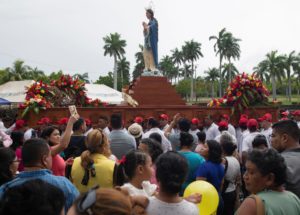
People surround a statue of Mary during a procession on the perimeter of the Metropolitan Cathedral in Managua, Nicaragua, Nov. 26, 2023, as the Nicaragua government banned street processions this year due to unspecified security concerns. (OSV News photo/Maynor Valenzuela, Reuters)
In El Salvador, a distant echo of the centuries of debate among religious orders is found in a popular devotion to St. Anthony of Padua.
The shrine of “San Antonio del Monte” is a church built in honor of the discovery of a painted image of St. Anthony in a tree. Discovery of images is a familiar trope about holy statues and paintings because it emphasizes the divine inspiration of the object that promoted devotion. Very popular with indigenous in El Salvador for centuries, the devotion to San Antonio del Monte included the attestations of many miracles achieved through his intercession.
An Italian Franciscan friar who worked for years in El Salvador, Hilario Contran, of holy memory, explained to me why, in the image, St. Anthony is wearing a blue habit. Such habits were granted to friars in Spain, in its days of glorious empire, who would swear to defend the doctrine of the Immaculate Conception of Mary to the point of shedding blood.
San Antonio del Monte is an Immaculist image, therefore, an icon with a history.
Would many Catholics today be able to swear on their lives that Mary was free from all sin, original and otherwise? Perhaps they would be inspired to take a more serious look at the feast if they would attach it to what C.S. Lewis described as the chivalrous attitude of Catholics to Mary, a combination of respect for maternity and the troubadour’s love of his lady.
The French bishop and theologian Jacques-Bénigne Bossuet indicated a tender aspect to the doctrine that might seem so abstract to many. He said that, apart from the articles of the Creed, he did not see anything else that was more assured than Mary’s preservation from sin.
Bossuet asked, “Who could believe that nothing of the supernatural could be discerned in the conception of that princess, that it would be the only element in her life that was not marked by the miraculous?”
The Immaculate Conception deserves a higher place in our personal liturgical pilgrimage in the United States. And the emphasis on the importance of the moment of conception implicit in our national patronal feast can be salutary.
“Ave Maria Purisima,” as the priest traditionally says in Spanish celebrations of confession, “Sin pecado concebida!” replies the penitent. That refrain should echo in our hearts.
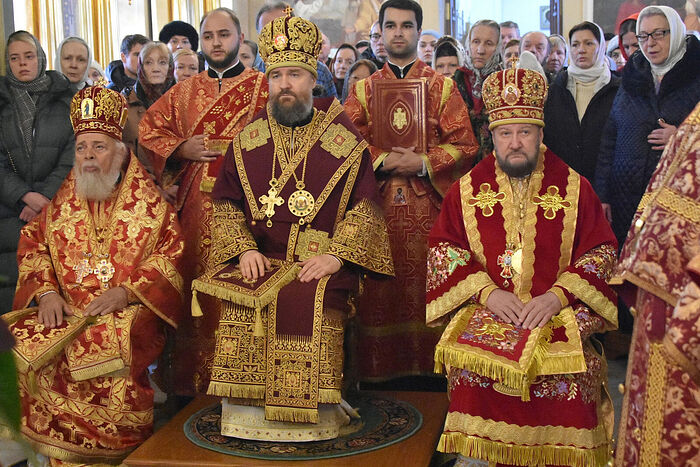 L to R: Met. Niphon (Antiochian), Met. Gregory (Russian), Bp. Anthony (Serbian). Photo: mospat.ru
L to R: Met. Niphon (Antiochian), Met. Gregory (Russian), Bp. Anthony (Serbian). Photo: mospat.ru 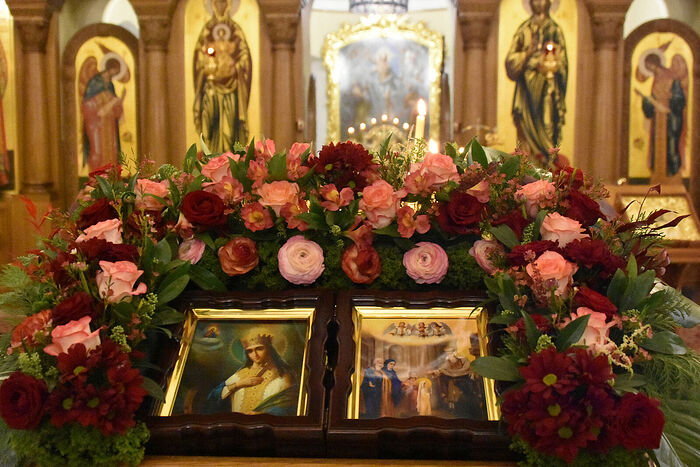 Photo: mospat.ru
Photo: mospat.ru 
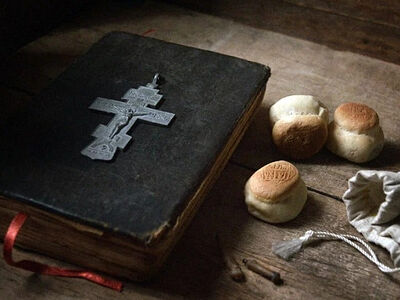 Let Us Fast in EarnestThus, let us begin on these fasting days to give ourselves to an intent study of fasting and prayer; and let us, at the same time, begin to fast and pray indeed.
Let Us Fast in EarnestThus, let us begin on these fasting days to give ourselves to an intent study of fasting and prayer; and let us, at the same time, begin to fast and pray indeed.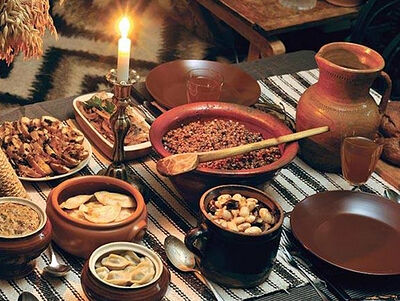 The Meaning and Significance of FastingFasting is a necessary means for success in the spiritual life and for attaining salvation; for fasting—depriving the flesh of excessive food and drink—weakens the force of sensual drives.” class=”tooltip”>Part 1/2: The Meaning and Significance of Fasting
The Meaning and Significance of FastingFasting is a necessary means for success in the spiritual life and for attaining salvation; for fasting—depriving the flesh of excessive food and drink—weakens the force of sensual drives.” class=”tooltip”>Part 1/2: The Meaning and Significance of Fasting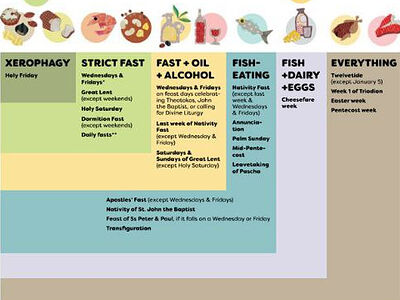 Accustoming Ourselves to FastingTo make our disposition towards fasting firm, we have to accustom ourselves to fasting slowly, carefully, not all at once, but gradually—little by little.” class=”tooltip”>Part 1/3: Accustoming Ourselves to Fasting
Accustoming Ourselves to FastingTo make our disposition towards fasting firm, we have to accustom ourselves to fasting slowly, carefully, not all at once, but gradually—little by little.” class=”tooltip”>Part 1/3: Accustoming Ourselves to Fasting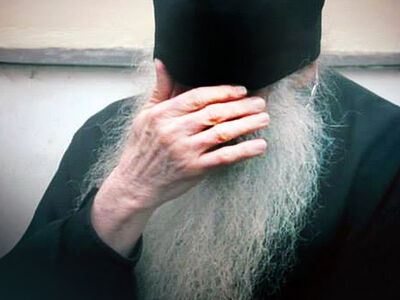 Spiritual FastingLet the mind fast, not permitting empty and bad thoughts; let the heart fast, refraining from sinful feelings; let our will fast, directing all our desires and intentions to the one thing needful…” class=”tooltip”>Part 1/4: Spiritual Fasting
Spiritual FastingLet the mind fast, not permitting empty and bad thoughts; let the heart fast, refraining from sinful feelings; let our will fast, directing all our desires and intentions to the one thing needful…” class=”tooltip”>Part 1/4: Spiritual Fasting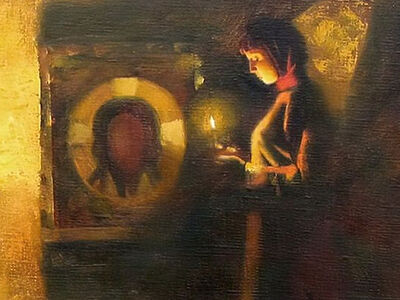 What is Prayer?A great prayerful power is at work in the prayers of the Holy Fathers, and whoever enters into them with all his attention and zeal will certainly taste of this prayerful power to the extent that his state of mind converges with the content of the prayer.”>Part 2/1: On Prayer. What is Prayer?
What is Prayer?A great prayerful power is at work in the prayers of the Holy Fathers, and whoever enters into them with all his attention and zeal will certainly taste of this prayerful power to the extent that his state of mind converges with the content of the prayer.”>Part 2/1: On Prayer. What is Prayer? 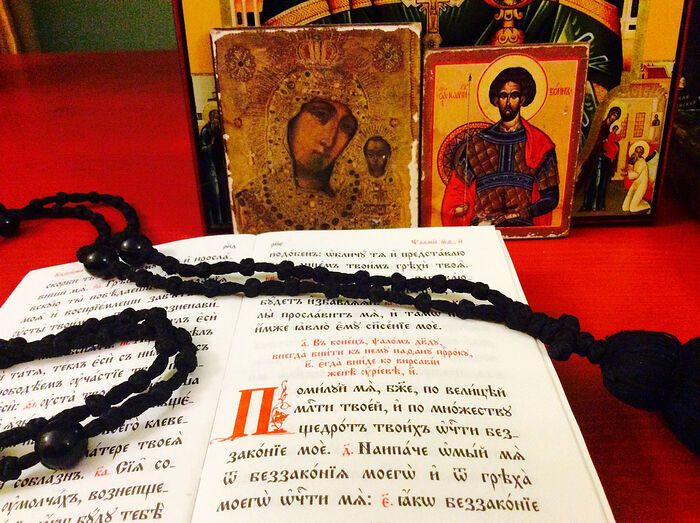
 Holy Hierarch St. Dimitry of RostovSoon Dimitry was called to perform a different labor. There was a need to assemble a collection of the Lives of the Saints. Metropolitan Makary had long since begun the task of collecting the Lives of Saints from various sources and assembling them in his great volumes of the Menaion.
Holy Hierarch St. Dimitry of RostovSoon Dimitry was called to perform a different labor. There was a need to assemble a collection of the Lives of the Saints. Metropolitan Makary had long since begun the task of collecting the Lives of Saints from various sources and assembling them in his great volumes of the Menaion.  Who is Our Neighbor?Love of neighbor is a clear test of our Christian life. But in order to understand what the love of our neighbor is, it would be good to first clarify who in fact is our neighbor?
Who is Our Neighbor?Love of neighbor is a clear test of our Christian life. But in order to understand what the love of our neighbor is, it would be good to first clarify who in fact is our neighbor?
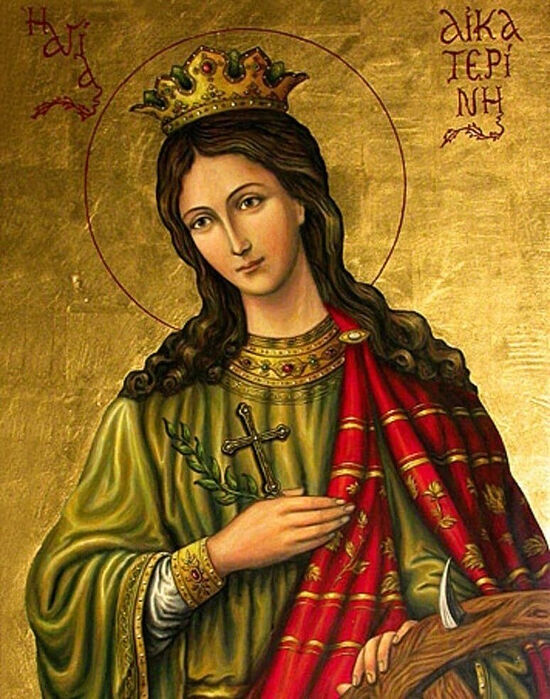
 Holy Great Martyr Catherine of AlexandriaIntroducing herself, the saint confessed her faith in the One True God and with wisdom exposed the errors of the pagans. The beauty of the maiden captivated the emperor. In order to convince her and to show the superiority of pagan wisdom, the emperor ordered fifty of the most learned philosophers and rhetoricians of the Empire to dispute with her, but the saint got the better of the wise men, so that they came to believe in Christ themselves.
Holy Great Martyr Catherine of AlexandriaIntroducing herself, the saint confessed her faith in the One True God and with wisdom exposed the errors of the pagans. The beauty of the maiden captivated the emperor. In order to convince her and to show the superiority of pagan wisdom, the emperor ordered fifty of the most learned philosophers and rhetoricians of the Empire to dispute with her, but the saint got the better of the wise men, so that they came to believe in Christ themselves. 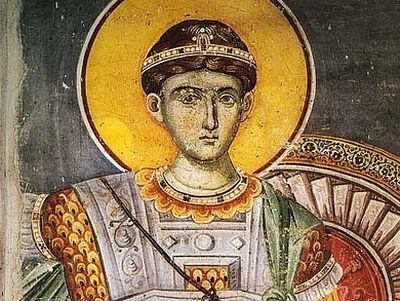 The Holy Great Martyr Demetrios of ThessalonikiKnowing what was awaiting him, Demetrius gave all his goods to his faithful servant Lupus to distribute to the poor, and joyfully awaited his imminent suffering for Christ the Lord.An angel of God appeared to him in prison, saying: ”Peace be to you, O sufferer of Christ; be brave and be strong!”
The Holy Great Martyr Demetrios of ThessalonikiKnowing what was awaiting him, Demetrius gave all his goods to his faithful servant Lupus to distribute to the poor, and joyfully awaited his imminent suffering for Christ the Lord.An angel of God appeared to him in prison, saying: ”Peace be to you, O sufferer of Christ; be brave and be strong!” Greatmartyr Theodore Stratelates “the General”The Great Martyr Theodore Stratelates came from the city of Euchaita in Asia Minor. He was endowed with many talents, and was handsome in appearance. For his charity God enlightened him with the knowledge of Christian truth.”>Theodore Stratelates of Heraclea.
Greatmartyr Theodore Stratelates “the General”The Great Martyr Theodore Stratelates came from the city of Euchaita in Asia Minor. He was endowed with many talents, and was handsome in appearance. For his charity God enlightened him with the knowledge of Christian truth.”>Theodore Stratelates of Heraclea.